Dreaming of a simpler, more sustainable lifestyle? Homesteading might just be the answer for many homesteaders searching for homegrown food, hunting, and agriculture. Homesteading is all about embracing self-sufficiency in agriculture, living off the land through hunting, and reconnecting with nature in your own homemade backyard. Urban homesteading is a way of life that involves gardening, agriculture, raising livestock, and preserving food on a productive homestead. It encompasses a wide range of homesteading activities.
But where did this concept come from? The roots of homesteading in the United States can be traced back to the 1800s with the Homestead Act of 1862, which encouraged individuals to settle and cultivate agricultural land. This act allowed people to claim and develop their own property, turning it into a self-sufficient backyard for farming and hunting. This act allowed settlers to claim free land for productive homesteading activities if they were willing to develop and cultivate it. Thousands of farmers and families seized this opportunity in agriculture to establish their own homesteads and create a better future for themselves and their backyard.
So get ready, farmers, to embrace a simpler way of life as we uncover the wonders of homesteading and share delicious recipes made with backyard food.
Planning Your Homestead Journey
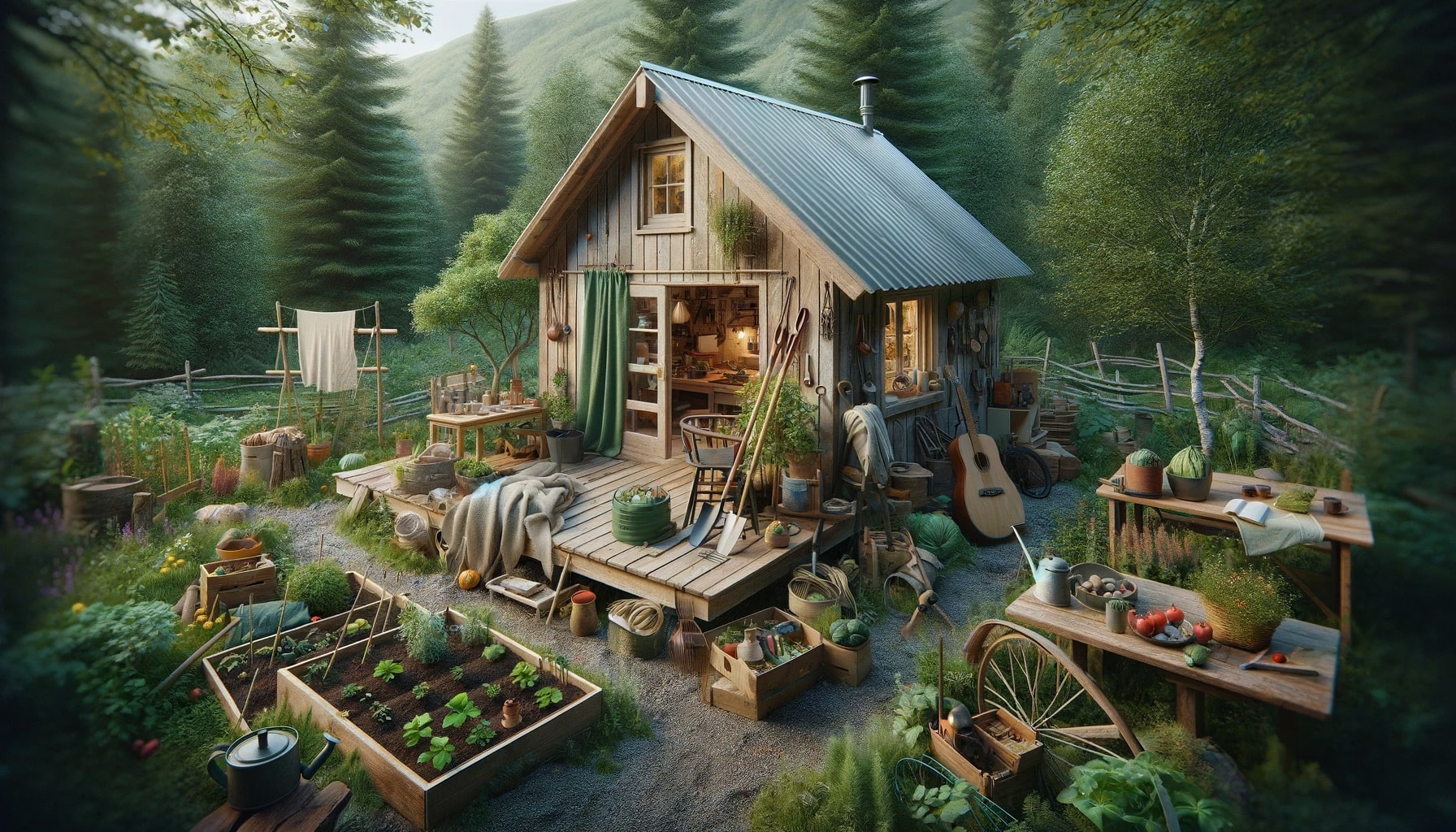
Setting Goals for Your Endeavors
Define your vision for homesteading. Do you want to achieve self-sufficiency in food, live a more sustainable lifestyle, or both? Are you looking to develop the skill of growing your own food and supporting local farmers? Explore our blog for delicious recipes that will help you on your journey. Take some time to reflect on your aspirations and write down your skill goals. It could be related to gardening, animal husbandry, renewable energy sources, or any other aspect of homesteading that resonates with farmers. Whether it’s growing food, caring for animals, finding sustainable energy sources, or exploring new recipes, these aspects of homesteading are essential to the farmer’s life.
Once you have defined your goals, break them down into actionable steps to develop the necessary skills and work towards creating delicious recipes and food. This will help you track your progress and stay motivated along the way as you develop your cooking skill, work on trying new food recipes. For example, if one of your goals is to start a vegetable garden, break it down into smaller tasks like researching different plant varieties, preparing the soil for planting seeds, and trying out new recipes using the fresh produce from your garden. This will not only improve your gardening skills but also support local farmers. By breaking larger goals into manageable steps, you can skillfully tackle the work one by one and celebrate each good milestone as a start.
Remember that goal setting is not set in stone. As you gain skill and knowledge in homesteading, regularly reassess and adjust your work goals accordingly. There is a lot going on in this field, so it’s important to stay flexible and adapt as needed. You may find that certain work goals are no longer relevant or need modification based on new insights. This skill of adapting to changing circumstances is important in order to keep things going smoothly. Stay flexible and open-minded as you embark on this journey of skill development and hard work. It’s important to have a good mindset and keep going, even when faced with challenges.
Choosing the Ideal Location

When selecting a location for your homestead, consider various factors that can impact its success. One of the key factors to consider is the skill level required to maintain the homestead. There are a lot of things that you will need to know and be able to do in order to successfully run a homestead. So, it’s important to choose a location that suits your skill set and where you have the necessary skills to handle all the things that need to be done. Climate is a skill that plays a crucial role in determining the right things crops need to thrive in an area. Research the average temperatures, rainfall patterns, and growing seasons of potential locations to ensure they align with your skill, right, things, and going needs.
Soil quality is another important consideration. Look for areas with the right skill in cultivating fertile soil that can support the need for healthy plant growth without excessive amendments or treatments. To assess the quality of the soil in different locations, you need to conduct soil tests or consult local agricultural extension offices. These are skills that require a lot of knowledge and expertise in understanding various things about soil.
Water availability is vital for maintaining a productive homestead. Consider the right skill to access freshwater sources such as wells or rivers when evaluating potential sites. Research the zoning regulations if you have a lot and need to know the restrictions on collecting rainwater. It’s going to require a skill to understand the water usage rights and follow the regulations.
Researching local laws and regulations related to homesteading is an essential skill. It’s important to have the knowledge and understanding of the need for compliance with these laws. There are a lot of things to consider when it comes to homesteading, and being aware of the legal requirements is one of them. Look into regulations for owning livestock, building codes, land use restrictions, and the skills you need. Ensure that you have the right skill set to handle a lot of things on your homestead.
Finally, consider the right proximity of your potential location to essential services like healthcare facilities and schools. It’s important to have the skill to find a place that is near these things. Making sure you have a lot of options in terms of healthcare and education is crucial when choosing a new home. While homesteading often involves a lot of skill and self-sufficiency, having access to these things can provide peace of mind and support in times of going need.
Starting Small in Homesteading
Simplifying Your Life for Homesteading
To embark on your homesteading journey, it’s essential to simplify your life and embrace a minimalist mindset. Going right and doing things a lot are key to success. Start by decluttering your living space and letting go of unnecessary possessions. It’s important to get rid of things that no longer serve a purpose. By doing this, you’ll be going in the right direction and clearing a lot of space. By streamlining your belongings, you can focus on the right things and get a lot done in homesteading. There is a lot going on, so it’s important to prioritize and stay organized.

Prioritize functional items that support your homesteading lifestyle. Invest in the right things and equipment that will aid you in a lot of tasks such as gardening, preserving food, or woodworking. There’s a lot going on, so having the right tools is important. These practical things will not only make your homestead more productive but also enhance your overall experience. With the right items, there is a lot going on.
In addition to physical possessions, it’s important to do the right things and make sustainable choices to minimize waste and conserve energy. By going green, you can make a lot of positive changes for the environment. Reduce, reuse, and recycle whenever possible to do the right things and limit the amount of trash generated on your homestead. There’s a lot going on, so it’s important to take action. When it comes to reducing carbon emissions, there are a lot of things you can do. Exploring alternative transportation methods like biking or carpooling is going to be the right choice.
Cultivating a mindset of gratitude and contentment is crucial when starting with homesteading. There are a lot of things that need to be done right and going in the right direction. Appreciate the simple things and the right pleasures that come with this lifestyle – the satisfaction of growing your own food, the tranquility of nature surrounding you, and the sense of accomplishment from self-sufficiency. There is a lot going on in this lifestyle that can bring you joy. Find joy in these small things and let them inspire you along this rewarding journey. There are a lot of things going right that can bring you happiness.
Essential Considerations for Beginners
As a beginner in homesteading, it’s important to start small and gradually expand your activities over time. There are a lot of things going on, so it’s right to take it slow and do what feels comfortable for you. Begin with the right things – manageable projects that match your skill level and available resources. There is a lot going on, so it’s important to start off on the right foot. This approach allows you to learn a lot from each experience while going right, building confidence along the way.
Seek guidance from experienced homesteaders who can offer valuable insights based on their own experiences. There are a lot of things going right. Join local homesteading communities or online forums where you can connect with like-minded individuals who are going through a lot of right things and are passionate about self-sufficiency. These communities provide the right support, knowledge sharing opportunities, and a lot of things going on, creating a sense of camaraderie.
Research is key when starting any new venture – and homesteading is no exception. It’s important to do the right things and have a lot of knowledge before going into homesteading. Familiarize yourself with the right things going on and the lot of specific challenges and opportunities that exist in your chosen area of homesteading. Understand the right climate, soil conditions, and local regulations that may impact your plans. There are a lot of things going on that you need to consider. By doing the right things, you can make informed decisions and adapt your strategies accordingly. There is a lot going on, so it’s important to stay on top of things.
Be prepared for setbacks and failures along the way. Homesteading is a journey of learning and growth, with a lot of mistakes along the way. But that’s okay because it’s all part of going right. Embrace these valuable lessons as the right experiences that will ultimately contribute to your going success. There is a lot to learn from them.
Building Your Homestead Foundation
Establishing a Productive Garden
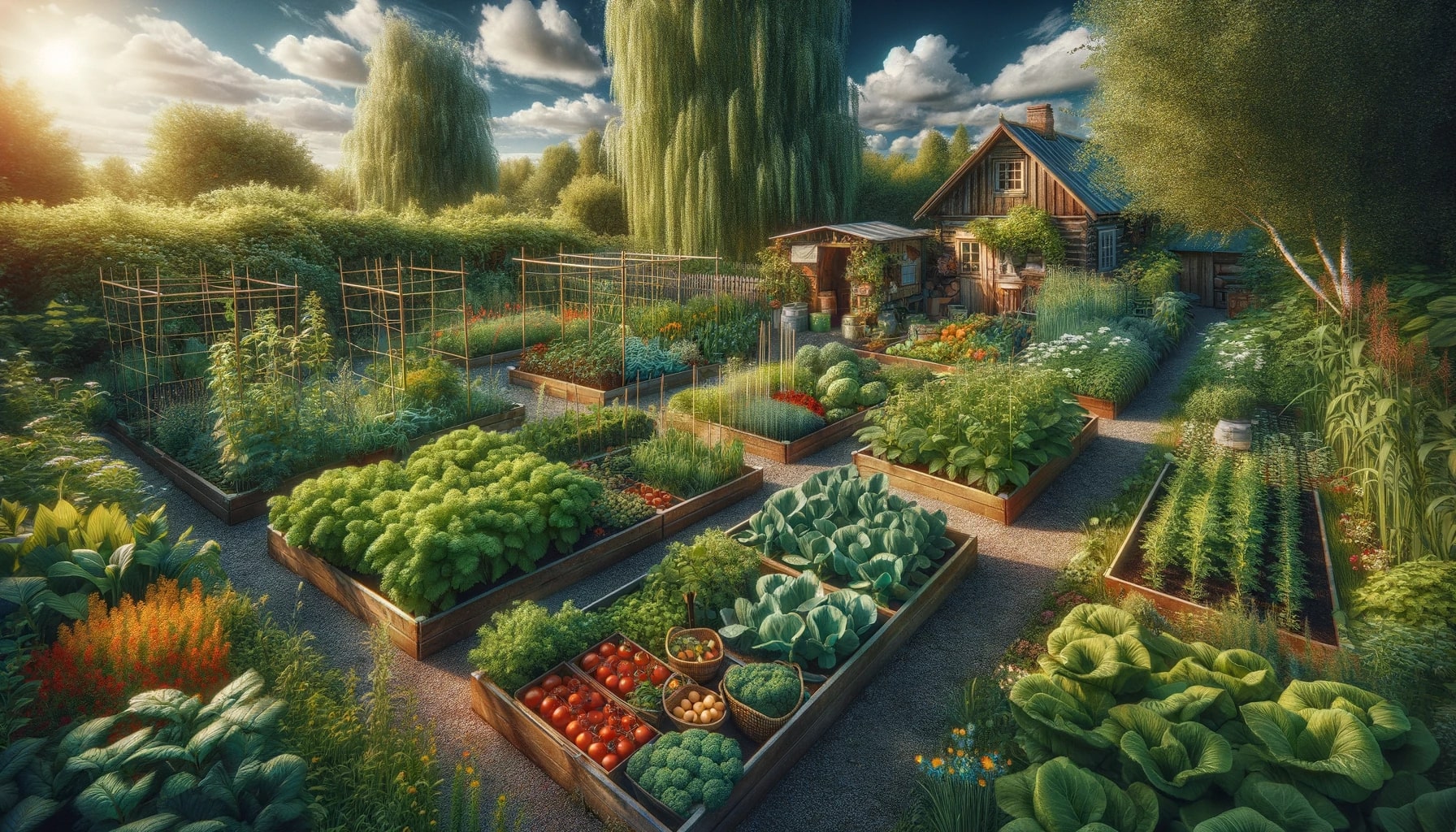
To start your homesteading journey, one of the first steps is to establish a productive garden. It’s important to get the gardening process going right from the beginning, as it can make a lot of difference in your homesteading experience. Begin by assessing the quality of your soil and making any necessary amendments to create the right growing environment. When planning your garden layout, it is important to consider factors such as the right amount of sunlight exposure, proper water accessibility, and the use of companion planting techniques. These factors will ensure that your garden is set up for success and going in the right direction. Choose the right crops that are well-suited to your climate and the length of your growing season. Make sure you are going in the right direction when selecting the crops for your garden. To ensure the right sustainability, implement organic fertilization methods, practice crop rotation, and conserve water. These practices are essential for going green and promoting a healthier environment.
Mastering Food Preservation Techniques
Learning the right food preservation techniques is essential for homesteading success. If you want to ensure that your harvest doesn’t go to waste, it’s important to know the proper methods for preserving food. Familiarize yourself with methods such as canning, dehydrating, fermenting, freezing to extend the shelf life of your harvests. It’s important to know what you’re doing when it comes to preserving your produce. By going through these processes, you can ensure that your food stays fresh for longer and avoid any potential waste. So, make sure you’re doing it right! Understanding the right food storage techniques is crucial for maximizing shelf life while ensuring quality and safety. It’s important to know what’s going on with proper food storage. Experiment with different recipes and preservation methods to diversify your pantry and make the most of seasonal abundance. By trying out various cooking techniques and exploring new ways to preserve food, you can ensure that you are going in the right direction towards maximizing your pantry’s potential. Utilize the right homegrown produce or locally sourced ingredients for going and preserving the flavors of nature.
Learning Basic Construction and Repair Skills
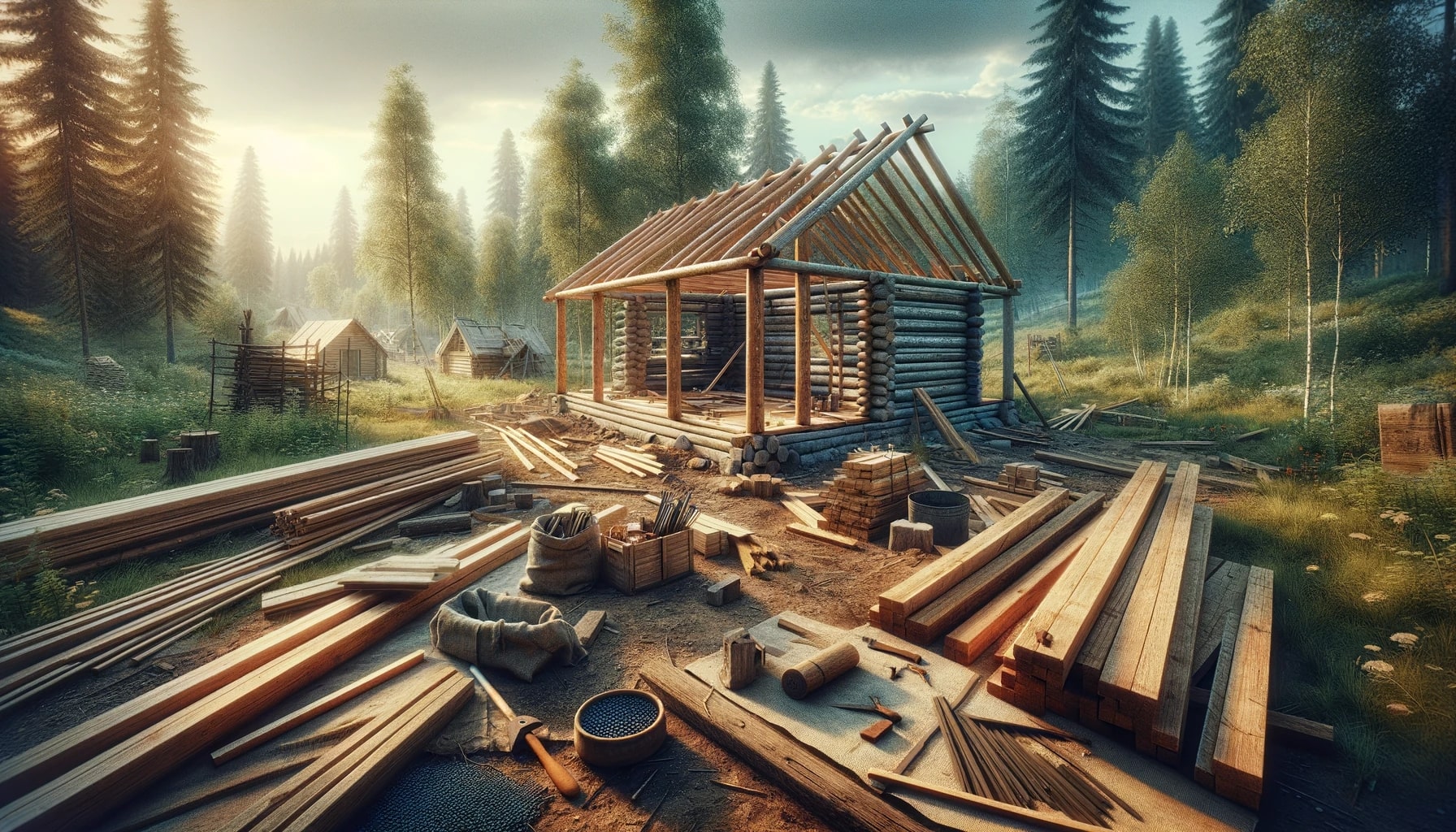
Acquiring the right basic construction and repair skills will empower you on your homesteading journey. So, make sure you are going in the right direction by learning these essential skills. Develop the right fundamental knowledge in carpentry, plumbing, electrical work, and general construction practices to ensure you are going in the right direction. Get acquainted with basic tools and their uses for common repairs around the homestead. Whether you are going to fix a leaky faucet or repair a broken cabinet, having the right tools is essential. By understanding how each tool works and what it is used for, you can tackle these tasks with confidence. So, let’s dive in and explore the world of tools! Understanding building codes and safety regulations is vital when going about infrastructure projects to ensure compliance. Regular maintenance and timely repairs are crucial for going prolonging the lifespan of buildings and structures while avoiding costly replacements.
By establishing a productive garden, you can grow fresh produce right at home while embracing sustainable gardening practices like organic fertilization, crop rotation, water conservation, and going green.
Mastering food preservation techniques, such as canning, dehydrating, fermenting, and freezing, allows you to enjoy the bounty of each season throughout the year by going through the process of learning these methods.
Learning basic construction skills is essential for anyone going into the field. It equips you with the knowledge needed to maintain and repair infrastructure, ultimately saving you money in the long run.
Taking these steps will lay a solid foundation for your going homesteading journey. Remember, starting small and gradually expanding your skills and knowledge is key to going on a successful journey of growth and development. With time and dedication, you’ll be well on your way to going and creating a self-sufficient lifestyle that brings fulfillment, sustainability, and joy.
Expanding Your Homesteading Skills
Developing Sewing and Mending Abilities
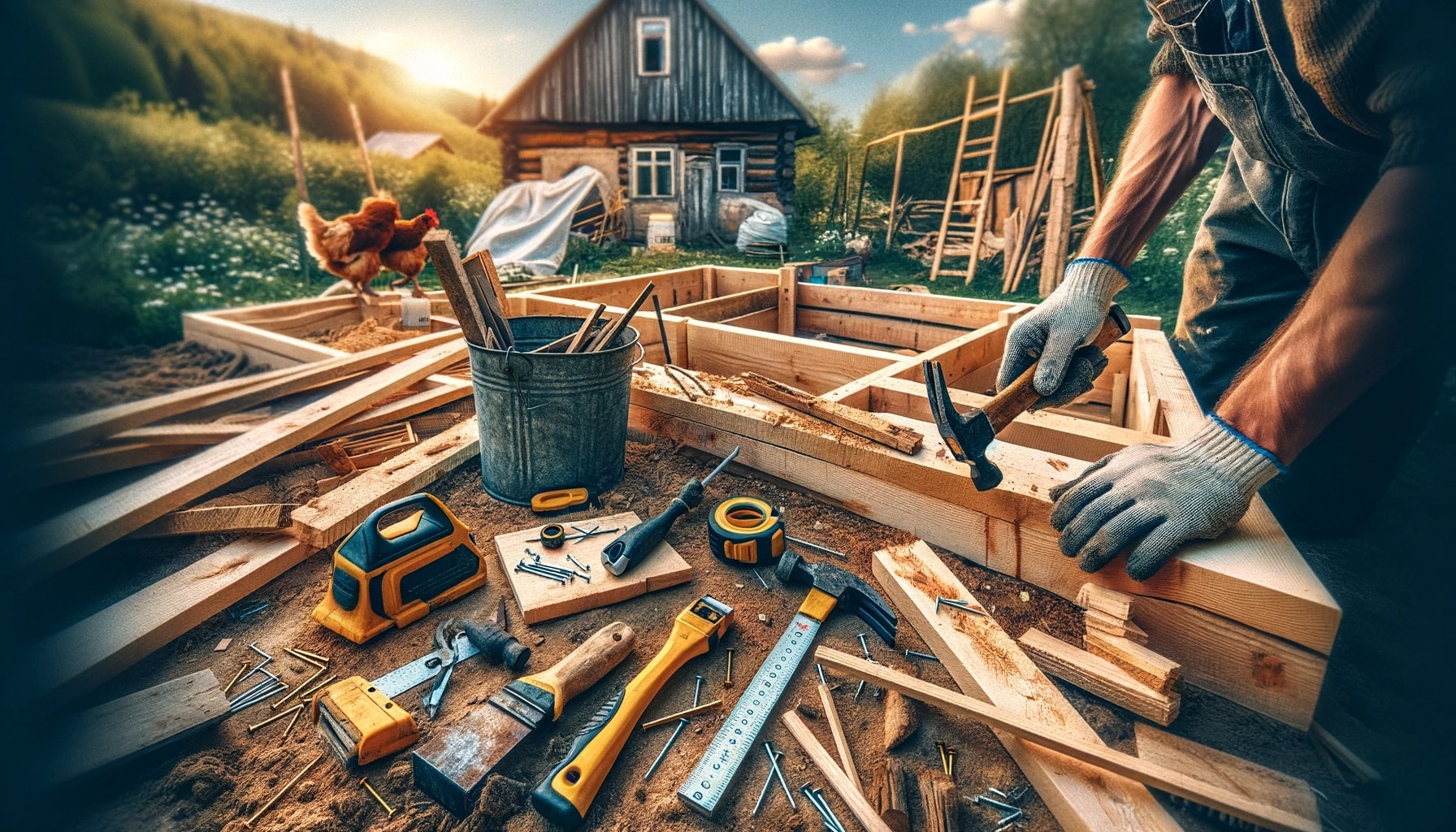
Developing sewing and mending abilities is a valuable skill for any homesteader who is going to live a self-sufficient lifestyle. By learning basic sewing techniques, you can mend clothing, create functional items, and repurpose materials. Sewing is a valuable skill that allows you to be self-sufficient and creative. Whether you are going on a trip and need to quickly fix a torn shirt or want to make personalized gifts for your loved ones, sewing skills are essential. Additionally, sewing provides an opportunity to reduce waste by repurposing old fabrics and materials. So, if you are looking to save money, express your creativity, and contribute to sustainable practices, consider going on a sewing journey today. From patching holes to fixing seams, repairing fabrics becomes an essential part of sustainable living on your homestead. Exploring the art of upcycling allows you to transform old garments into new creations, reducing waste and maximizing resources. To get started, consider investing in a quality sewing machine and essential sewing supplies that will serve you well on your homestead journey.
Creating a Permaculture-based System
Creating a permaculture-based system is another way to expand your homesteading skills while promoting sustainability. Understanding the principles of permaculture is key; it emphasizes sustainable design that mimics natural ecosystems. By implementing techniques such as companion planting, water harvesting, and soil regeneration, you can create a self-sustaining system on your homestead. This approach fosters biodiversity by incorporating native plants, beneficial insects, and wildlife habitats into your land. Remember that observation and adaptation are crucial; continuously monitor and adjust your permaculture system to optimize its productivity and resilience over time.
It’s important to familiarize yourself with local regulations and obtain any necessary permits or licenses. Hunting can provide an opportunity to supplement your food sources sustainably while honing valuable outdoor skills. However, always prioritize safety when engaging in hunting activities.
Agriculture plays a vital role in the success of any homestead. Whether you have a small garden or larger agricultural endeavors like raising livestock or cultivating crops such as peppers, understanding farming practices is essential. Take the time to research different agricultural methods suitable for your climate and available resources. Consider joining local farmer networks or attending workshops where you can learn from experienced farmers in your area.
Managing Your Homestead Successfully
Composting for Sustainability
Establishing a composting system is an essential step in creating a sustainable homestead. Composting allows you to recycle organic waste, such as kitchen scraps, yard waste, and animal manure, into nutrient-rich soil amendment. There are different composting methods you can explore, including traditional compost piles, vermicomposting (using worms), or bokashi fermentation.
By utilizing these methods, you can create a balanced compost mixture that will enrich your garden beds and promote healthy plant growth. Regularly applying compost to your soil helps improve its fertility and increases its ability to retain moisture. This not only benefits your plants but also reduces the need for synthetic fertilizers and water usage.
Real-Life Homesteading Projects
Engaging in hands-on projects is an exciting part of homesteading. Building chicken coops provides shelter for your feathered friends while ensuring they have a safe place to lay eggs. Constructing raised beds allows you to optimize space and create ideal growing conditions for vegetables and herbs.
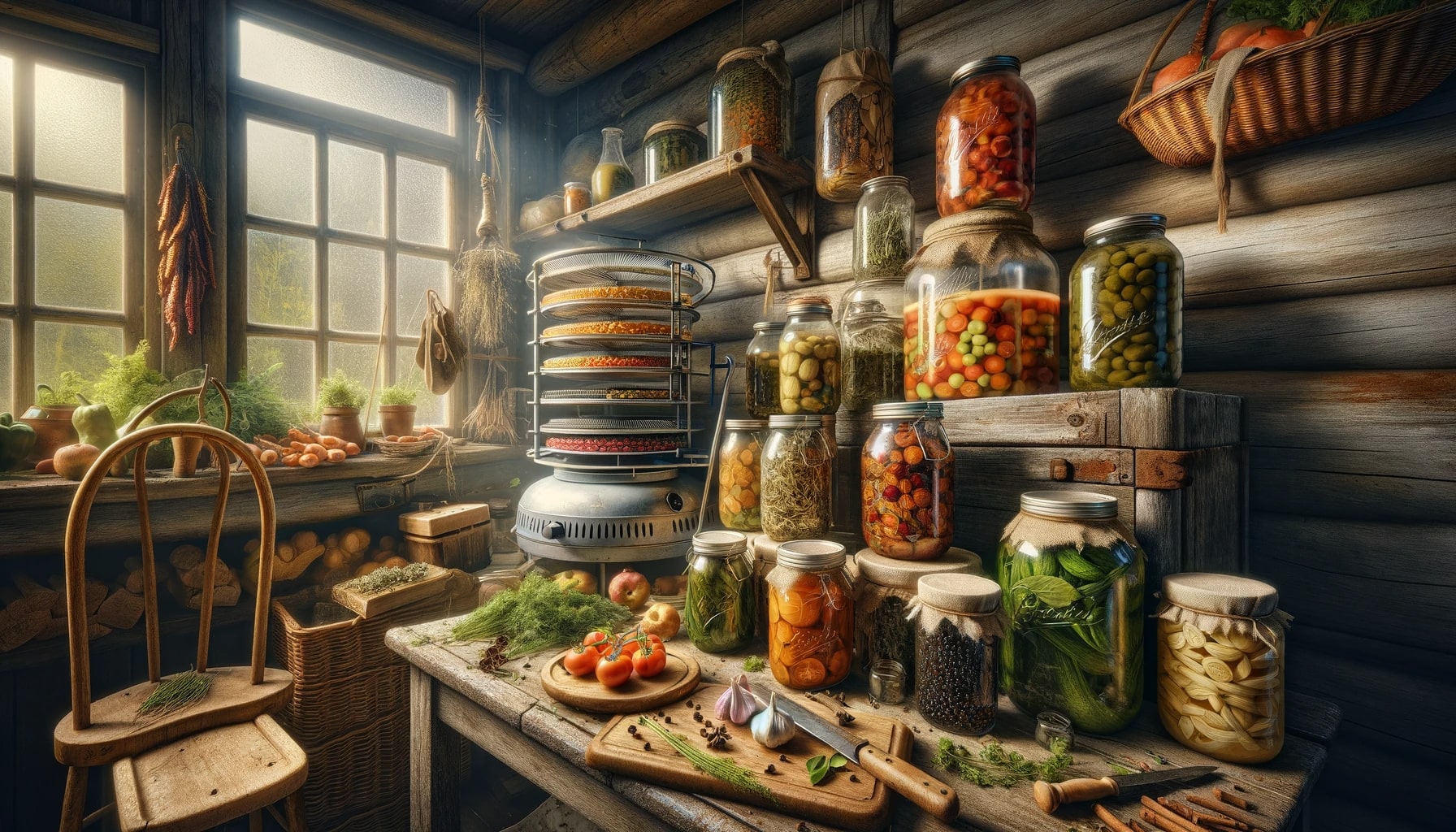
Consider installing rainwater harvesting systems to collect and store rainwater for irrigation purposes. This sustainable approach reduces reliance on municipal water sources during dry spells. Exploring renewable energy projects like solar panels or small wind turbines can help power various aspects of your homestead while minimizing your environmental impact.
Creating functional structures such as root cellars, greenhouses, or cold frames enables year-round food production by extending the growing season in colder climates. These structures provide protection from harsh weather conditions and allow you to grow crops even during winter months.
Documenting your homesteading projects through photographs or videos not only serves as a personal record but also inspires others on their own homesteading journey. Sharing your experiences can help build a supportive community of like-minded individuals who can learn from one another’s successes and challenges.
Connecting with the Homesteading Community
Building Connections with Fellow Homesteaders
Building connections within the homesteading community is a valuable step in starting your journey. Attending local homesteading events, workshops, or conferences provides an opportunity to meet like-minded individuals who share your passion for self-sufficiency. These gatherings offer a chance to exchange ideas, learn from experienced homesteaders, and form lasting friendships.
Joining online homesteading communities and forums is another way to connect with fellow homesteaders. These platforms provide a space to share experiences, seek advice, and find support from others who understand the challenges and rewards of homesteading. Engaging actively in these communities allows you to tap into a wealth of knowledge and gain insights from diverse perspectives.
Participating in skill-sharing activities or organizing homesteading meetups in your area can foster meaningful connections. By sharing your own expertise or learning from others’ skills, you create opportunities for collaboration and mutual growth within the community. Whether it’s learning how to raise chickens or preserving food, these hands-on experiences strengthen bonds between fellow homesteaders.
Collaboration is key. Consider partnering with them on joint projects or resource-sharing initiatives. For example, you could organize a group bulk purchase of seeds or equipment, reducing costs for everyone involved. By working together towards common goals, you not only build relationships but also create a supportive network that benefits all members.
Accepting Feedback and Continuous Learning
To thrive as a homesteader, it’s crucial to be open to feedback from experienced individuals in the community. Their insights can help you avoid common pitfalls and accelerate your learning curve. Embracing constructive criticism allows you to refine your practices and make improvements along the way.
Adopting a growth mindset is essential in the world of homesteading. Recognize that there will always be more to learn and room for improvement. Stay updated on the latest advancements and best practices by exploring books, online resources, and educational courses dedicated to homesteading. This commitment to continuous learning ensures that you stay informed about new techniques, technologies, and sustainable practices.
Reflecting on your own experiences is another valuable aspect of continuous learning. Take time to evaluate what worked well and what didn’t in your homesteading endeavors. Consider keeping a journal or documenting your progress to track your growth over time.
Preparing for Self-Sufficiency
Can You Achieve Self-Sufficiency on One Acre?
Achieving self-sufficiency on a smaller land size, like one acre, is indeed possible. While it may seem challenging, there are several techniques and strategies you can employ to maximize space utilization and make the most of your available resources. Consider exploring vertical gardening or intensive planting methods to grow more in less space. By growing plants vertically or closely together, you can increase your yield significantly.
Prioritize those that align with your available land resources. For instance, focus on growing staple crops that provide essential nutrients and sustenance for you and your family. Consider raising small livestock such as chickens or rabbits, which require less space compared to larger animals like cows or pigs.
It’s important to continuously assess and adjust your self-sufficiency expectations based on your specific circumstances. Recognize that achieving complete self-sufficiency may not be feasible for everyone due to factors like climate limitations or time constraints. However, by setting realistic goals and making incremental progress towards self-sufficiency, you can still experience the benefits of homesteading even on a smaller scale.
Common Activities in Homesteading Practice
Homesteading involves a wide range of activities that contribute to self-sufficiency and sustainable living. Engaging in daily chores is an integral part of the homesteading lifestyle. This includes taking care of animals, tending to gardens, and preserving food through various methods such as canning or dehydrating.
One of the joys of homesteading is being able to harvest fresh produce from your own garden. Whether it’s picking ripe fruits, vegetables, herbs, or collecting eggs from your chickens’ coop, enjoying the fruits of your labor is incredibly rewarding. Not only does this ensure a constant supply of nutritious food for yourself and your loved ones, but it also reduces reliance on store-bought produce.
Implementing sustainable waste management practices is another crucial aspect of homesteading. Recycling materials, composting organic waste, and finding creative ways to reuse items not only minimize your environmental impact but also contribute to the overall self-sufficiency of your homestead. By reducing waste and repurposing resources, you can further optimize your homesteading systems and maximize productivity.
Legal and Practical Aspects of Homesteading
Free Land Opportunities through Homesteading
If you’re considering starting your homesteading journey, exploring free land opportunities can be an exciting option. Research various programs or initiatives that offer free land for homesteading purposes in specific regions. Take the time to understand the eligibility criteria, application process, and any associated obligations or restrictions that may come with these opportunities.
It’s important to carefully consider the pros and cons of free land opportunities. While acquiring free land may seem enticing, location suitability and long-term sustainability prospects should be evaluated. Assess whether the region’s climate, soil quality, and access to resources align with your homesteading goals.
It is crucial to evaluate the financial implications of developing the land for homesteading. Consider the investments required for infrastructure development such as building a home, establishing water sources, or setting up livestock facilities. Understanding these aspects will help you make an informed decision about pursuing free land opportunities.
State-by-State Analysis of Homesteading Laws
Homesteading laws and regulations vary across different states within a country. Conduct thorough research to compare these laws and understand their specific requirements related to land ownership, zoning regulations, livestock management guidelines, and building codes.
To ensure accurate information on homesteading laws in your desired location, consult legal professionals or local authorities who specialize in this area. They can provide you with up-to-date information regarding any changes or amendments made to homesteading laws over time.
When choosing a location for your homestead, it is essential to consider the legal framework surrounding homesteading activities. Familiarize yourself with property taxes applicable in each state as they can significantly impact your overall expenses when owning and operating a homestead.
By conducting a state-by-state analysis of homesteading laws, you’ll gain valuable insights into which states offer more favorable conditions for pursuing your self-sufficient lifestyle aspirations.
Homesteading is a rewarding journey that requires careful consideration of both legal and practical aspects. By exploring free land opportunities and understanding the homesteading laws in different states, you can make informed decisions that align with your goals and aspirations.
Resources for Ongoing Education
Utilizing Winter for Knowledge Expansion
Embrace the slower pace of winter to focus on learning new skills or expanding your knowledge base. Take advantage of this time to delve into educational resources that can enhance your homesteading journey. Consider exploring books, online courses, or documentaries related to various homesteading topics. These resources can provide valuable insights and practical guidance.
Engaging in indoor projects during winter is another way to expand your knowledge. Use this time to start seeds indoors, plan next year’s garden layout, or experiment with new recipes using ingredients from your homestead. These activities not only keep you engaged but also allow you to learn through hands-on experience.
Connecting with other homesteaders is an excellent way to gain knowledge and inspiration. Despite the physical distance, virtual platforms have made it easier than ever to connect with like-minded individuals. Join online communities or attend virtual workshops and conferences where you can interact with experienced homesteaders, ask questions, and learn from their experiences.
Recommended Reading and Online Resources
Books serve as a treasure trove of information. Look for titles that cover self-sufficiency, gardening techniques, animal husbandry, preserving food, or any other aspect of homesteading that interests you. These books offer detailed explanations, step-by-step instructions, and valuable tips based on the authors’ expertise.
In addition to books, there are numerous reputable websites, blogs, and forums dedicated to sharing knowledge about homesteading practices. These online resources often feature articles written by experienced homesteaders who share their insights and experiences. They can be a valuable source of inspiration and practical advice for both beginners and seasoned homesteaders alike.
Social media platforms like Instagram and YouTube have also become popular spaces for sharing ideas and experiences related to homesteading. Follow accounts or channels run by experienced homesteaders who regularly post content about their daily activities, challenges, and successes. These platforms can provide you with a visual representation of homesteading practices and inspire you to try new things on your own homestead.
To stay updated on the latest trends and practices in homesteading, consider subscribing to newsletters or joining online communities that focus on this lifestyle. These resources often provide regular updates, tips, and advice from experts in the field. By staying connected through these channels, you can continue learning and growing as a homesteader.
Conclusion
Congratulations on completing this comprehensive guide to homesteading! You’ve taken a significant step towards creating a self-sufficient and fulfilling lifestyle. By now, you should have a solid understanding of the key principles and practical aspects of homesteading. From planning your journey to connecting with the homesteading community, you’ve gained valuable insights that will help you embark on this exciting adventure.
Now that you have the knowledge, it’s time to put it into action. Start small and gradually expand your skills and resources. Remember, homesteading is a journey, and it’s okay to make mistakes along the way. Embrace the challenges and learn from them. Stay connected with the homesteading community for support and inspiration. Most importantly, enjoy the process and savor the rewards of living a simpler, more sustainable life.
Homesteading offers an opportunity for personal growth, connection with nature, and a sense of fulfillment that cannot be found elsewhere. So go ahead, take the first step towards your homesteading dream. Your journey awaits!
Frequently Asked Questions
How can I start my homesteading journey?
To start with homesteading, begin by researching and planning your goals. Start small with basic skills like gardening and raising animals. Build a solid foundation by learning about sustainable practices and connecting with the homesteading community for support and guidance.
What are some important aspects to consider when planning my urban homesteading life? Many homesteaders engage in a variety of homesteading activities, so it’s crucial to carefully plan your homestead.
When planning your homestead, consider factors such as available land, climate conditions, zoning regulations, and your personal interests and skills. It’s crucial to create a detailed plan that includes setting realistic goals, budgeting for expenses, and outlining the necessary resources and infrastructure needed.
How do I expand my skills in homesteading?
Expand your homesteading skills by continuously seeking knowledge through books, online resources, workshops, or courses. Experiment with new techniques and learn from experienced homesteaders. Embrace a growth mindset, be open to learning from mistakes, and celebrate each achievement along the way.
How can I successfully manage my homestead?
Successful management of a homestead involves careful organization and prioritization. Create schedules for tasks such as planting seasons or animal care routines. Maintain good record-keeping practices to track progress and identify areas for improvement. Seek advice from seasoned homesteaders for effective management strategies specific to your needs.
Where can many homesteaders find resources for ongoing education in homesteading, agriculture, and homegrown food?
There are various resources available for ongoing education in homesteading. Look for local agricultural extension offices that offer workshops or classes. Online platforms provide access to blogs, forums, videos, webinars, and downloadable guides on different aspects of homesteading. Joining relevant social media groups can also connect you with like-minded individuals who share valuable insights.

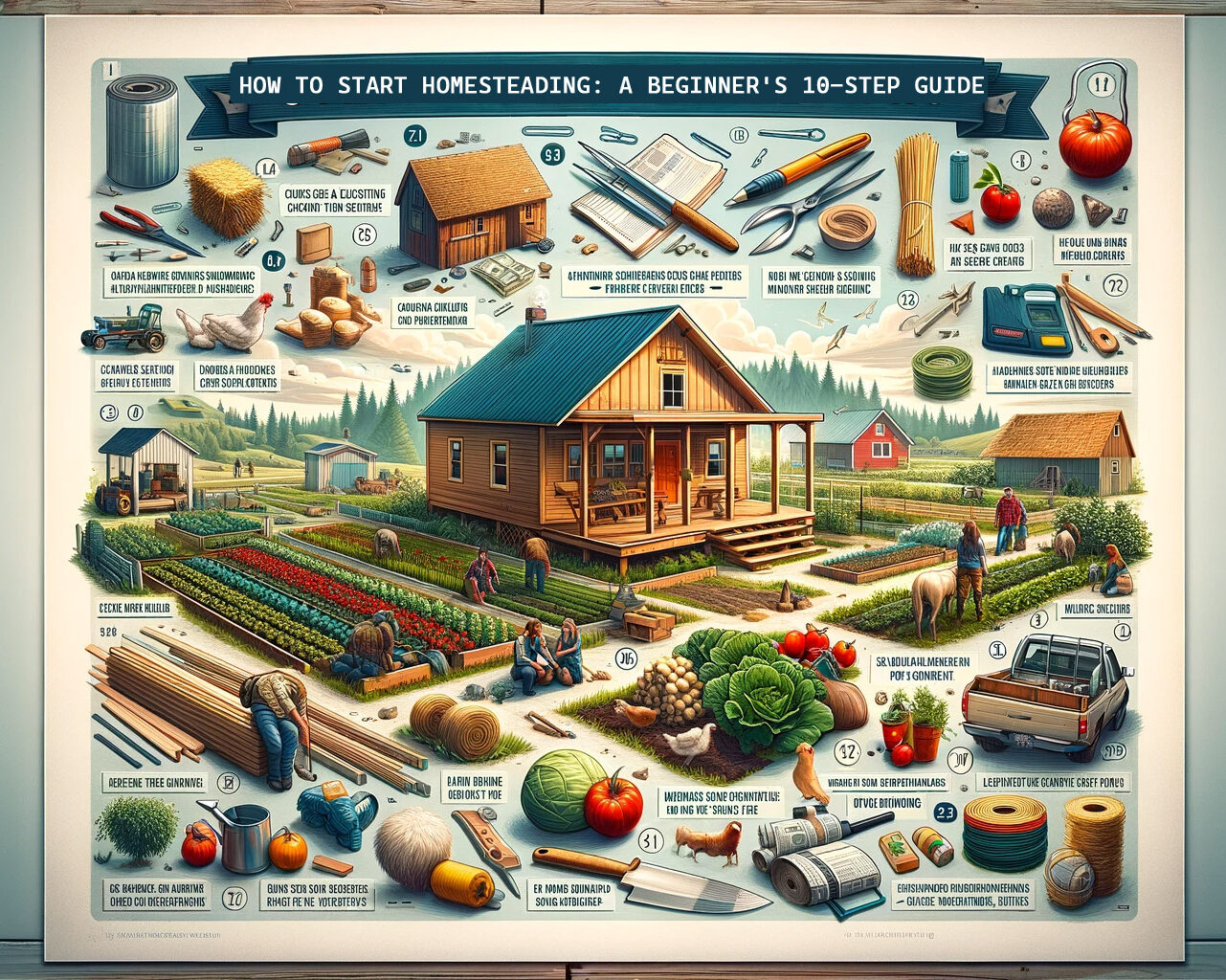


I’d like to learn a out flood zone maps, water levels under the ground and the freeze points under ground when looking to buy land.